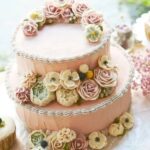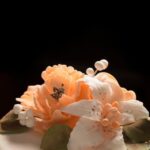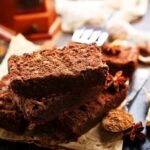Do you decorate your cake with real or fresh flowers to add a touch of natural beauty and elegance to your creations? The use of flowers in cake decoration has been a longstanding tradition that continues to captivate both bakers and customers alike.
In this article, we will delve into the art of adorning cakes with real or fresh flowers, exploring their history, advantages, drawbacks, safe options, preparation techniques, alternatives, expert insights, and ultimately providing a verdict on the best practices.
Throughout history, flowers have been a symbol of celebration and beauty in various cultures worldwide. The practice of incorporating flowers into cake decoration dates back centuries when they were used not only for their visual appeal but also for their fragrant aroma. Today, this tradition persists as bakers continue to find creative ways to integrate real or fresh blooms into their confectionery masterpieces.
When it comes to decorating cakes with real flowers, there are both pros and cons to consider. On one hand, real flowers can effortlessly elevate the aesthetic appeal of a cake with their vibrant colors and delicate petal arrangements. However, concerns over pesticide residues or allergens may deter some from using them. Fresh flowers offer an alternative that eliminates these worries while still providing a stunning visual impact on the finished product.
History of Using Flowers in Cake Decoration
The history of using flowers in cake decoration dates back centuries, with different cultures around the world incorporating floral elements into their sweet creations. In ancient civilizations, like Greece and Rome, edible flowers were often used to adorn cakes during special occasions and celebrations. The aesthetic appeal of flowers on cakes has stood the test of time, evolving from simple petals to elaborate arrangements that enhance the overall design.
Throughout history, flowers have symbolized various meanings and emotions, making them a popular choice for adding sentiment and elegance to cakes. For example, roses are commonly associated with love and passion, making them a fitting choice for wedding cakes. Buttercream or fondant flowers are meticulously crafted by skilled bakers to mimic the beauty of real blooms, allowing for endless creative possibilities in cake decorating.
When it comes to choosing between real or fresh flowers for cake decoration, it’s important to consider both the visual impact and food safety aspects. Real flowers can add a natural touch to cakes but may not be safe for consumption due to potential pesticides or chemicals used in their cultivation.
On the other hand, fresh edible flowers offer a safer option for decorating cakes while still providing a burst of color and flavor. Ultimately, it comes down to personal preference and ensuring that proper precautions are taken when using any type of flower on a cake.
- Edible flower petals like pansies, roses, violets
- Organic blooms free from pesticides and chemicals
- Freshly picked seasonal flowers
- Cleanse the flowers thoroughly before use
- Remove pistils or stamens from certain types of blooms
- Use edible flower petals as decorative accents
Pros and Cons of Using Real Flowers on Cakes
Benefits of Using Real Flowers
Using real flowers on cakes can add a touch of elegance and sophistication that artificial flowers sometimes lack. The natural beauty of real flowers can instantly elevate the appearance of a cake, making it perfect for special occasions like weddings or birthdays. Real flowers also have a wonderful fragrance that can enhance the overall sensory experience of enjoying a slice of cake.
Drawbacks of Using Real Flowers
One major drawback of using real flowers on cakes is the potential toxicity if the flowers are not safe for consumption. Many flowers may contain pesticides or other chemicals that can be harmful if ingested. Additionally, real flowers may wilt quickly, especially if they are exposed to heat or placed directly on frosting. This can lead to an unappealing appearance and potentially spoil the cake.
Recommendations for Using Real Flowers Safely
If you choose to decorate your cake with real flowers, it’s crucial to ensure that the flowers are edible and safe for consumption. Organic, pesticide-free flowers are ideal for cake decoration. Before placing them on the cake, wash the flowers thoroughly to remove any dirt or residue.
It is also recommended to place a barrier between the stems and the cake to prevent any direct contact with potentially harmful elements. Remember to remove the flowers before serving, as some guests may have allergies or sensitivities to certain types of blooms.
Pros and Cons of Using Fresh Flowers on Cakes
Fresh flowers have become a popular choice for decorating cakes, adding a touch of natural beauty and elegance to any dessert. However, there are both pros and cons to using fresh flowers on cakes that need to be considered before incorporating them into your design.
One of the main advantages of using fresh flowers is their natural fragrance and vibrant colors, which can enhance the overall look of the cake. Additionally, fresh flowers provide a unique and sophisticated touch that can make any cake stand out at special events.
On the other hand, there are several factors to keep in mind when using fresh flowers on cakes. One major concern is the toxicity of certain flowers, as not all varieties are safe for consumption.
It is crucial to do thorough research or consult with a florist to ensure that the flowers you choose are edible and free from pesticides or other harmful chemicals. Another consideration is hygiene – fresh flowers may contain pollen or dirt that can be transferred to the cake if not properly cleaned and prepared.
In terms of convenience, using fresh flowers on cakes may require extra time and effort in terms of preparation and handling. Some individuals may prefer the convenience of artificial flowers that can be easily stored and reused without worrying about wilting or potentially harmful effects. Ultimately, weighing the pros and cons of using fresh flowers on cakes will help you make an informed decision based on your specific preferences and needs.
| Pros | Cons |
|---|---|
| Natural fragrance | Toxicity concerns |
| Vibrant colors | Hygiene issues |
| Sophisticated touch | Time-consuming preparation |
Types of Flowers That Are Safe for Cake Decoration
When it comes to decorating cakes with real or fresh flowers, it is essential to ensure that the flowers used are safe for consumption. Not all flowers are edible, and some can even be toxic if ingested. Here are some types of flowers that are commonly deemed safe for cake decoration:
- Roses: Roses are a popular choice for cake decoration due to their pleasing aroma and beautiful appearance. Make sure to remove the white base of the petals and any thorns before placing them on a cake.
- Violets: Violets come in various colors and add a delicate touch to cake designs. They have a slightly sweet flavor, making them ideal for both decoration and consumption.
- Lavender: Lavender not only adds a lovely fragrance to cakes but also brings a pop of color. When using lavender on cakes, choose culinary lavender to ensure its safety for consumption.
It is crucial to source these edible flowers from reputable suppliers who guarantee that they have been grown without the use of pesticides or other harmful chemicals. When in doubt about the edibility of a specific flower, it is best to err on the side of caution and refrain from using it for cake decoration.
- Sunflowers
- Nasturtiums
- Calendula
Additionally, consider your guests’ allergies when choosing which flowers to adorn your cakes with. Remember that while certain flowers may be aesthetically pleasing, the safety of those consuming the cake should always be the top priority when selecting flowers for decoration.
How to Properly Prepare and Clean Flowers for Cake Decoration
When it comes to decorating cakes with real or fresh flowers, proper preparation and cleaning are essential to ensure that the flowers are safe for consumption. Before placing any flowers on a cake, it is important to thoroughly clean them to remove any dirt, debris, or chemicals that may be present.
One method for cleaning flowers is to gently rinse them under cool running water. Make sure to remove any bugs or insects that may be hiding in the petals. It is also advisable to trim the stems of the flowers and remove any unwanted parts such as leaves or thorns before using them for cake decoration.
Another important step in preparing flowers for cake decoration is ensuring that they are free from pesticides or other harmful chemicals. If possible, choose organic flowers or those specifically labeled as edible. Avoid using flowers from florists as they may have been treated with chemicals that are not safe for consumption.
| Flower Type | Safety Level |
|---|---|
| Roses | Edible and Safe |
| Lavender | Edible and Safe |
| Violets | Edible and Safe |
By taking the time to properly prepare and clean flowers for cake decoration, you can ensure that your final creation not only looks beautiful but is also safe for consumption. Whether you choose to decorate your cake with real or fresh flowers, following these guidelines will help you create a stunning and delicious masterpiece that will impress your guests. So, do you decorate your cake with real or fresh flowers?
Alternatives to Fresh or Real Flowers for Cake Decoration
When it comes to decorating cakes, using fresh or real flowers is a popular choice for adding a touch of elegance and natural beauty. However, there are some concerns about the safety and practicality of using flowers directly on cakes. If you prefer to explore alternatives to fresh or real flowers for cake decoration, there are plenty of creative options to consider.
Edible Flowers
One alternative to using fresh or real flowers on cakes is to decorate with edible flowers. These floral decorations are specifically grown and prepared for culinary use, ensuring that they are safe for consumption. Edible flowers not only add a pop of color to your cake but also provide a delightful flavor that complements the sweetness of the dessert.
Fondant Flowers
Another popular alternative for decorating cakes with flowers is to create fondant flowers. Fondant is a type of icing that can be shaped and molded into various designs, including intricate flower petals and blooms. Fondant flowers allow you to customize the colors and sizes of your floral decorations, making them perfect for themed events or special occasions.
Sugar Flowers
For a truly stunning and realistic floral design on your cake, sugar flowers are an excellent choice. Sugar flowers are meticulously crafted by hand using sugar paste or gum paste, replicating the intricate details and delicate beauty of real blooms. While creating sugar flowers may require some skill and practice, the end result is a show-stopping cake that looks almost too beautiful to eat.
Incorporating these alternatives into your cake decoration can provide a safe and visually appealing way to add floral accents without the risk of contamination from non-edible flowers. Whether you choose edible flowers, fondant flowers, or sugar flowers, experimenting with different techniques can help you achieve the perfect look for your next cake creation.
Expert Tips for Incorporating Flowers Into Cake Design
When it comes to incorporating flowers into cake design, there are a few expert tips that can help take your creation to the next level. One important aspect to consider is the type of flowers you choose for decorating your cake.
It’s crucial to ensure that any flowers used are safe for consumption and have not been treated with pesticides. Edible flowers such as roses, violets, marigolds, and pansies are popular choices for cake decoration as they not only add a beautiful touch but also bring a subtle flavor to the dessert.
Another key tip is to carefully clean and prepare the flowers before placing them on the cake. Make sure to remove any pollen or stamens from the flowers as they can cause allergic reactions or stain the frosting.
It’s also a good idea to wash the flowers thoroughly and allow them to dry completely before use. Additionally, consider using floral tape or food-safe picks when attaching the flowers to the cake to prevent any direct contact between the blooms and the frosting.
In terms of design, less is often more when it comes to incorporating flowers into cake decorations. Choose a focal point on the cake where you want to place the blooms, such as cascading down one side or clustered in the center.
Mixing different sizes and colors of flowers can create a stunning visual impact while maintaining a cohesive look. Remember that simplicity and elegance are key when using flowers in cake design, so avoid overcrowding or overwhelming the overall aesthetic of your creation.
Conclusion
In conclusion, the debate over whether to decorate cakes with real or fresh flowers ultimately comes down to personal preference and the specific occasion. Both options offer unique benefits and challenges that should be considered before making a decision.
Real flowers bring a natural and elegant touch to a cake, but they require special care in terms of preparation and placement to ensure they are safe for consumption. On the other hand, fresh flowers provide a burst of color and fragrance that can truly enhance the overall look of a cake, but it is important to select varieties that are non-toxic and free from pesticides.
When deciding whether to decorate your cake with real or fresh flowers, it is essential to weigh the pros and cons outlined in this article. Consider factors such as the theme of the event, the preferences of the guests, and the availability of appropriate flowers in your area. Remember that safety should always be a top priority when using any type of flower for cake decoration.
Ultimately, whether you choose real or fresh flowers for cake decorating, the key is to approach the process with creativity, care, and attention to detail. By carefully selecting and preparing your flowers, you can create stunning cakes that are sure to impress your guests and make any occasion truly memorable.
So next time you’re planning a special event or celebration, ask yourself: do you decorate your cake with real or fresh flowers? The answer may just lead you to discover a whole new world of possibilities in cake decoration.
Frequently Asked Questions
Do You Put Real or Fake Flowers on a Cake?
Real flowers can be used to decorate a cake, but it is essential to ensure that they are organic and safe for consumption. However, artificial flowers made from edible materials are also a popular choice for cake decorations.
Can I Use Fresh Flowers to Decorate a Cake?
Fresh flowers can indeed be used to decorate a cake, as long as they are non-toxic and pesticide-free. It is crucial to wash them thoroughly before using them on any food items, including cakes. Edible flowers specifically grown for culinary use are the best option.
How Do You Top a Cake With Real Flowers?
Topping a cake with real flowers requires some care and attention to detail. It is recommended to place a piece of parchment paper on top of the cake before arranging the flowers to prevent direct contact with the icing.
Gently insert the stems into the cake in a visually pleasing arrangement, making sure not to overcrowd or overwhelm the cake’s design with too many blooms.

Welcome to my blog about home and family. This blog is a place where I will share my thoughts, ideas, and experiences related to these important topics. I am a stay-at-home mom with two young children. I hope you enjoy reading it! and may find some helpful tips and ideas that will make your home and family life even better!





